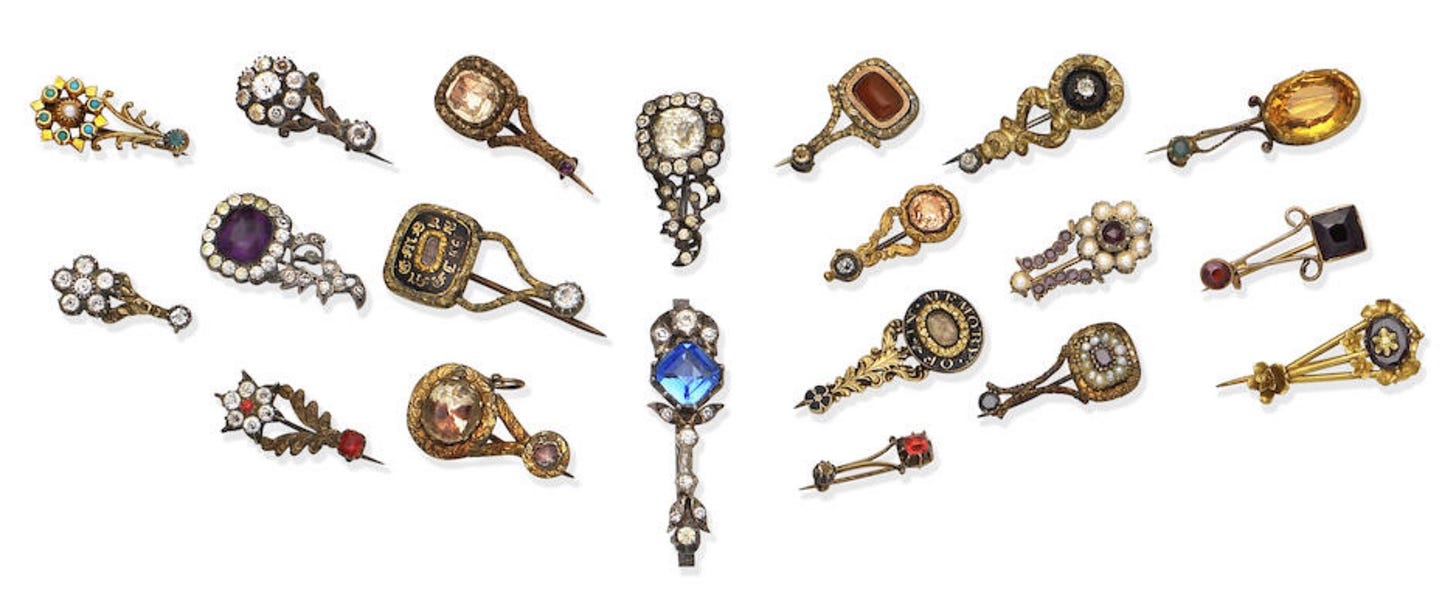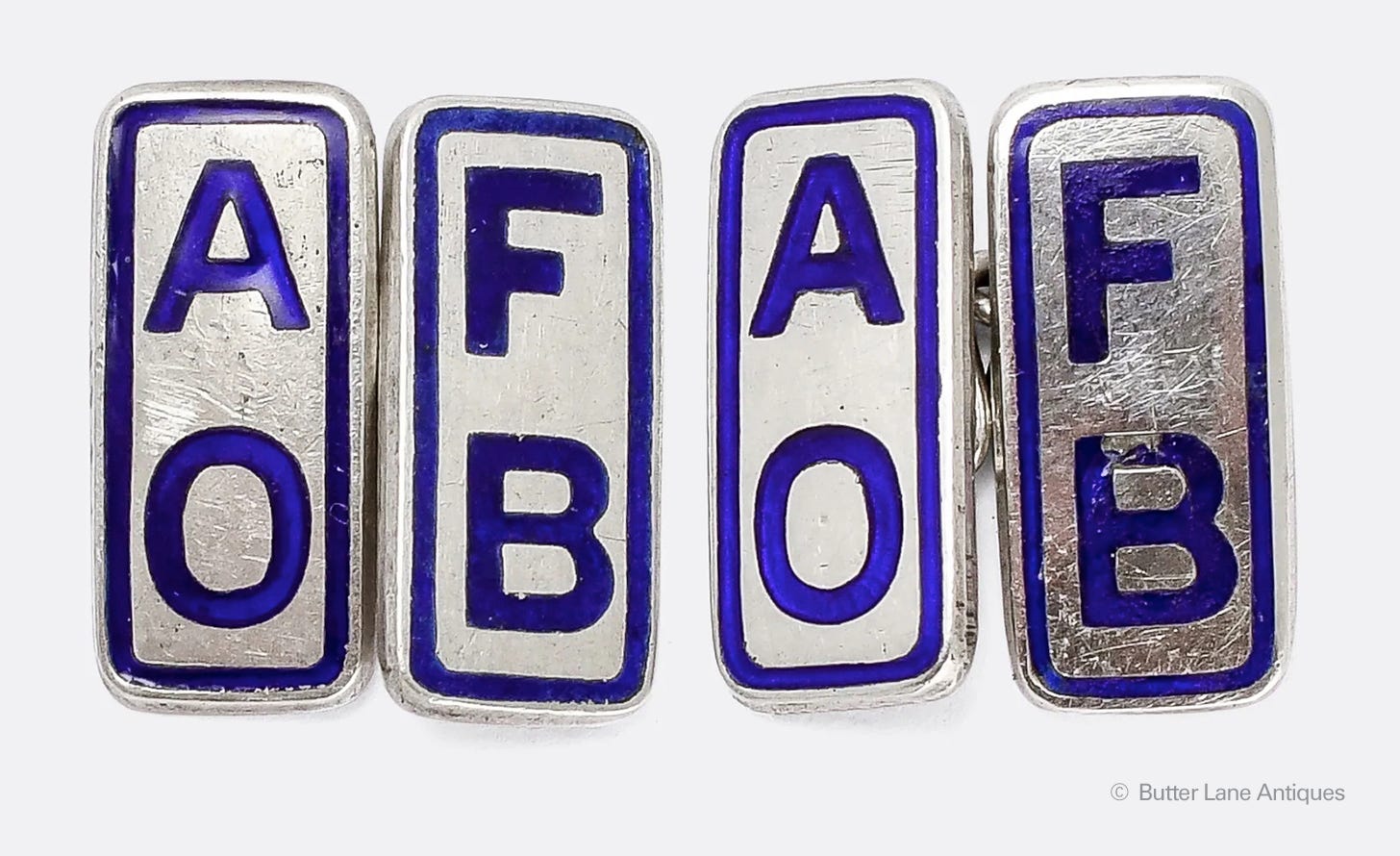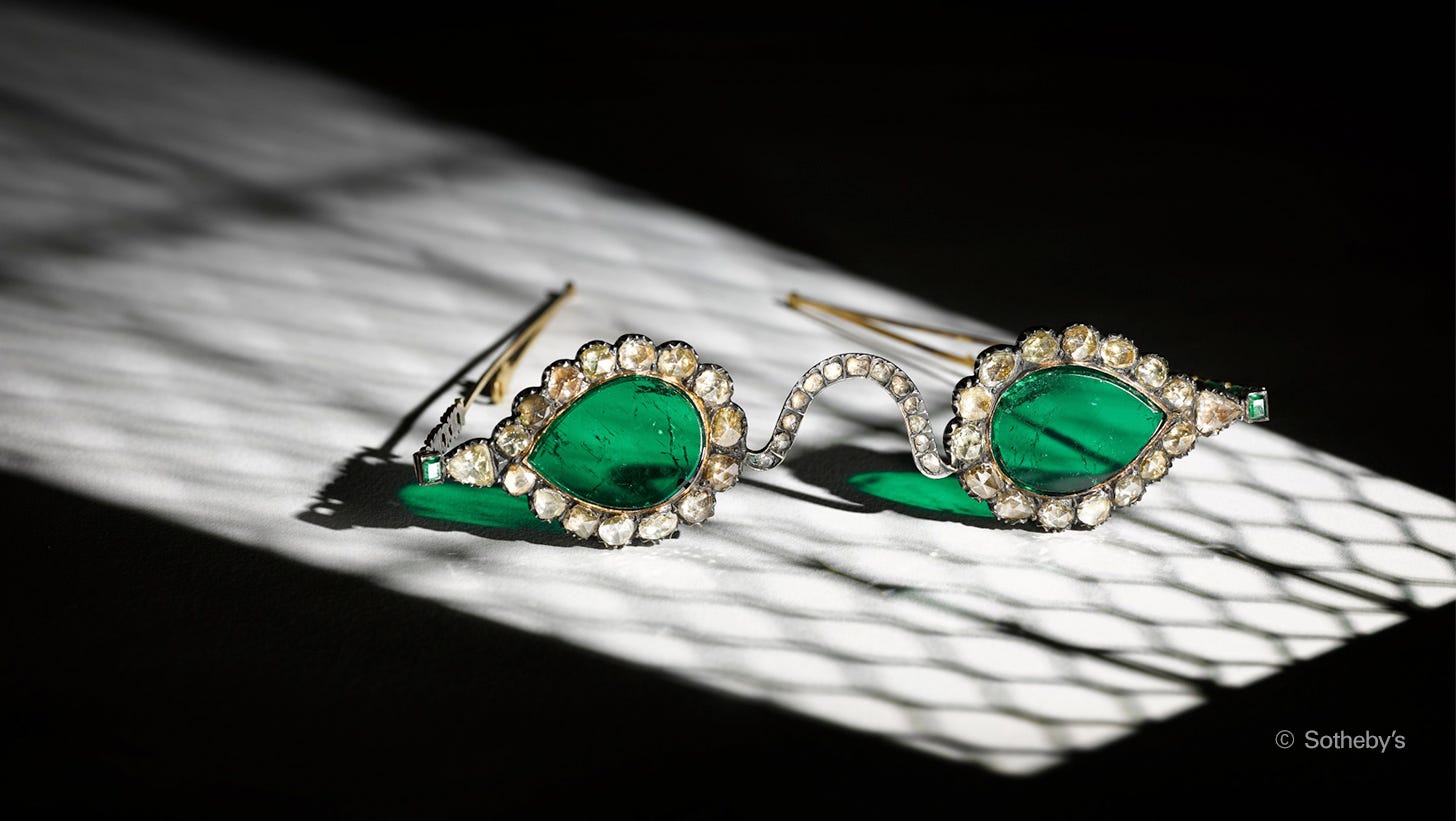This week, we interviewed Monica McLaughlin, a jewelry enthusiast and the writer behind Dearest, a publication that delves into the history, craftsmanship, and big stories behind antique objects.
This interview has been lightly edited for length and clarity.
What’s your Substack about in one sentence?
Dearest is a monthly newsletter about the history, stories, and occasional gossip behind pieces of antique jewelry (and other interesting items!). I cherry-pick from upcoming auctions and dealer websites.
What makes you passionate about antique jewelry?
Well, first off, there’s the beauty and craftsmanship angle; let’s get that out of the way. But for me, it’s really the history—looking beyond the piece itself and taking note of all the factors that came together in the world to bring it into existence. It may have been created as part of a war effort or made to memorialize a precious loved one (or a queen, or a poet) or even to simply document an event, like the passing of Halley’s Comet or the launch of the first hot-air balloon. The stories are endless, and even though I’ve been doing this for ages now, I’m still constantly being surprised and enchanted by some of the things that pop up for sale.

There also simply isn’t a lot of information out there about antique jewelry. I hear from so many readers that they never realized it could be affordable or even accessible to them, so I hope that alongside the enthusiastic shouting, I am also demystifying the trade for others.
This publication originated as a column on The Hairpin blog. How has your experience writing it shifted, if at all, since the move to Substack?
Not all that much, although I do tend to go off on even longer tangents than I used to! I’m totally incapable of reining myself in. I do miss the feel of blogs, though—particularly The Hairpin and The Toast, which both had wonderful, raucous comments sections.
One thing that has changed is that I started to offer paid subscriptions last year, and it took me a while to figure out what those paid emails should look like. I needn’t have worried, though, because they sort of evolved on their own into more in-depth posts focusing on a single item or theme. I’m really enjoying writing them—the smaller group of recipients makes it feel like a club, and the discussions we have in the comments are a delight.
You bring a lot of humor and playfulness to your writing, which is not what one might expect from analysis of historical artifacts. How would you describe your voice?
I try to write conversationally, as if I’m telling a friend about this cool thing I just found. There can be a ton of research and detail that goes into what I’m writing, but I try to get it across in a way that doesn’t feel boring or overwhelming. Hopefully my enthusiasm is infectious.
I also have to confess that the undercurrent of hysterical giddiness present in some of my emails is there because I usually finish writing—directly in the CMS, like some kind of an animal—at 3 a.m. and then schedule them to go out a few hours later while I’m asleep. So let’s just say it’s not unusual for me to wake up, read what I sent out, and think, “What the hell, Monica?”
What do you look for in the pieces you feature?
If you make a habit of looking through auction and dealer websites, you will quickly develop an eye for what is common and what isn’t, and the more unusual pieces will practically jump off the page.

I mainly look for age and rarity, not necessarily price. Huge diamonds bore me to tears, but give me a backstory and I’m in heaven. A recent paid post focused on a set of simple, $250 silver and enamel cufflinks that, on further reading, turned out to be the membership cufflinks of a short-lived but incredibly successful English charitable organization called the Ancient Order of Froth Blowers. The AOFB (motto: “Lubrication in Moderation”) met regularly at pubs and followed a wonderfully silly set of rules and, in the process, raised the equivalent of over $7 million for children’s charities in the 1920s. That’s exactly the kind of thing I’m looking for.
Huge diamonds bore me to tears, but give me a backstory and I’m in heaven.
What’s one of the strangest objects you’ve uncovered so far?
Well, the emerald-lensed eyeglasses were pretty incredible, but I also loved the Tiffany & Co. pendant watch with the compartment on the back that contained dirt from the New York City subway groundbreaking in 1900. At first glance it looked like a simple, elegant watch pendant, but surprise! It’s actually a one-of-a-kind piece of history that originally belonged to the daughter of John McDonald, the contractor who oversaw the construction of the first NYC subway line.

Read more: Emerald eyeglasses, Elvira, and other extraordinary excesses and A hawk bell, a dethroned maharaja, and Joan Crawford
How does the modern era of jewelry compare to the historical pieces you’ve studied?
Fashion is cyclical, of course, so trends circle around all the time even in jewelry, and right now I think we’re going through a signet-ring phase again. The pearls-on-men thing is currently ruffling some feathers among the old-school jewelers, but men wore pearls for centuries; it was only a matter of time before the look resurfaced. It’s long past due, really. More power to them!
No matter what style it takes, though, people find meaning in jewelry. Alongside our collections of fashion-influenced stuff, there’s almost always a piece or two that is deeply connected to ourselves or our families. We hold these precious little objects—wedding rings, lockets, a stone or watch that belonged to a grandfather—so closely to ourselves, and that has never gone out of fashion. I personally collect mourning rings, and I feel as if I’m helping to fulfill someone else’s original purpose by caring for them and keeping them safe. I know I tend to sentimentalize things, but I do feel strongly that these pieces deserve respect—they’re far older than we are, and they will continue to exist long after we’ve gone. For however long I’m around, I want to be a good caretaker for my part of a jewel’s life.
Who’s another Substack writer you’d recommend?
I adore Edith Zimmerman’s comics newsletter Drawing Links. Edith was my editor at The Hairpin. Dearest literally wouldn’t exist without her! She has a way of looking at the world from a slightly skewed angle that is endearing and funny and deeply personal. Drawing Links focuses mainly on moments in her life, but she also throws in some stories, like the ridiculously charming Bathtub Mermaid.
Subscribe to Monica’s Substack, Dearest. You can also find Monica on Twitter.







